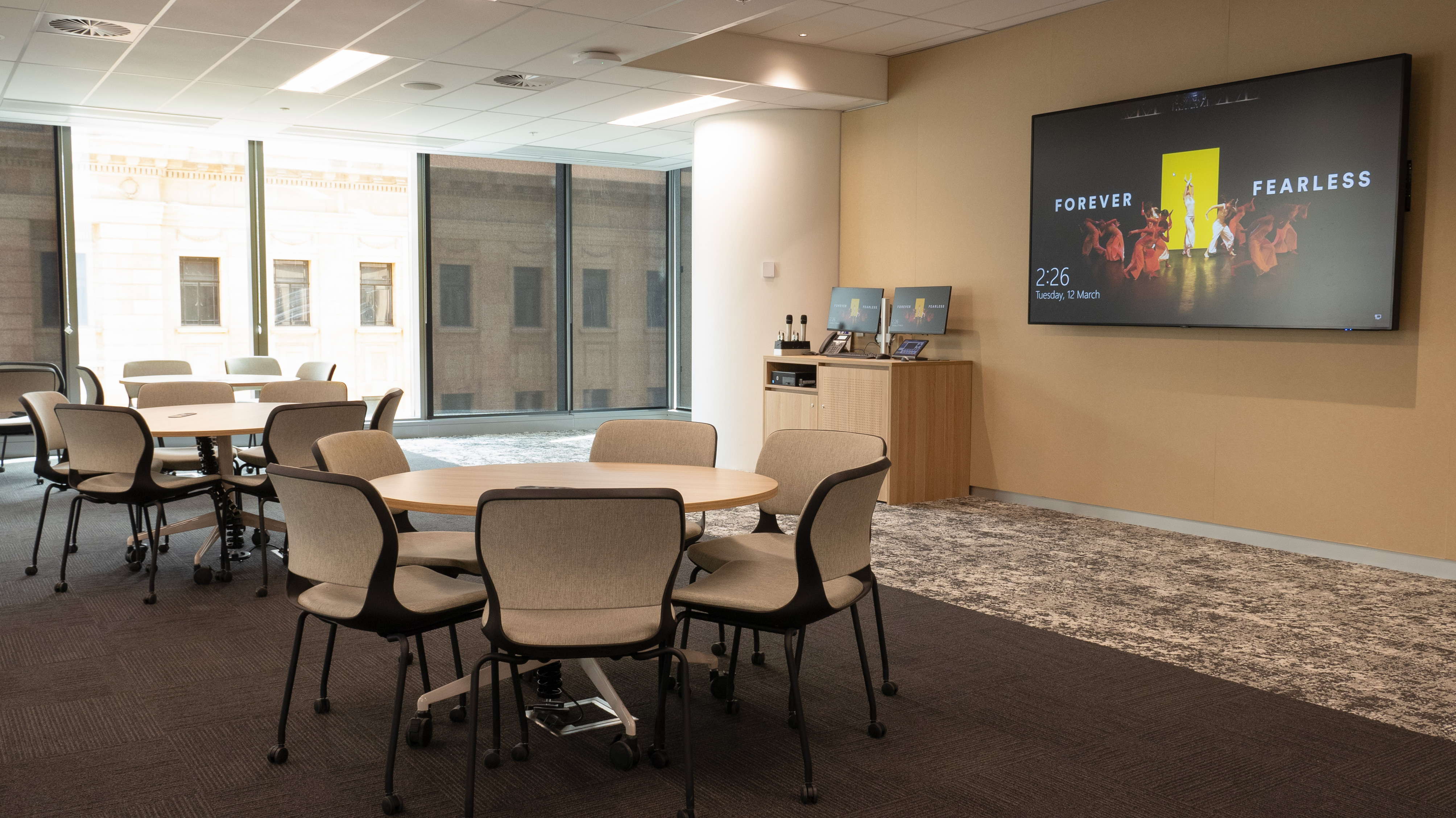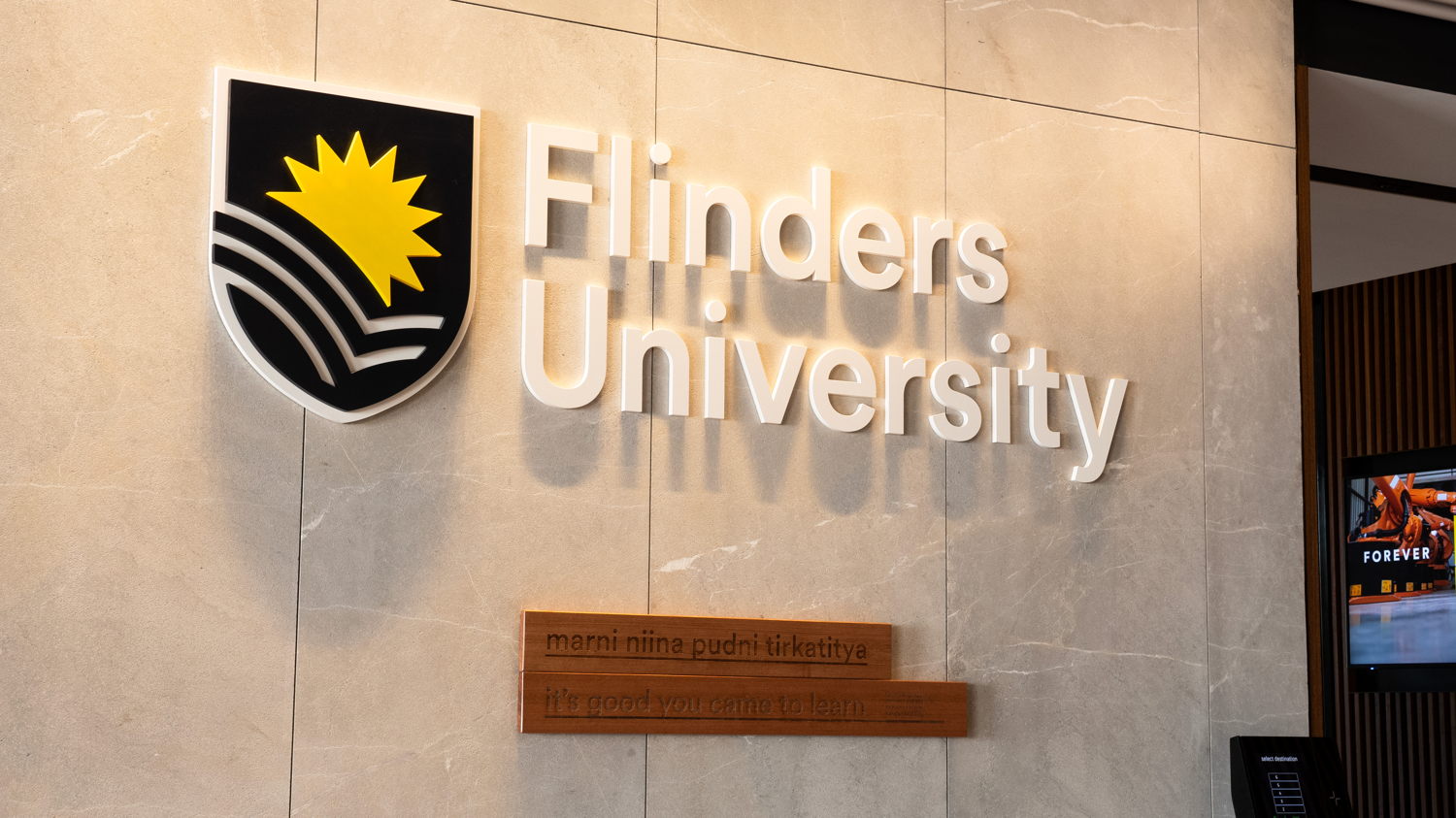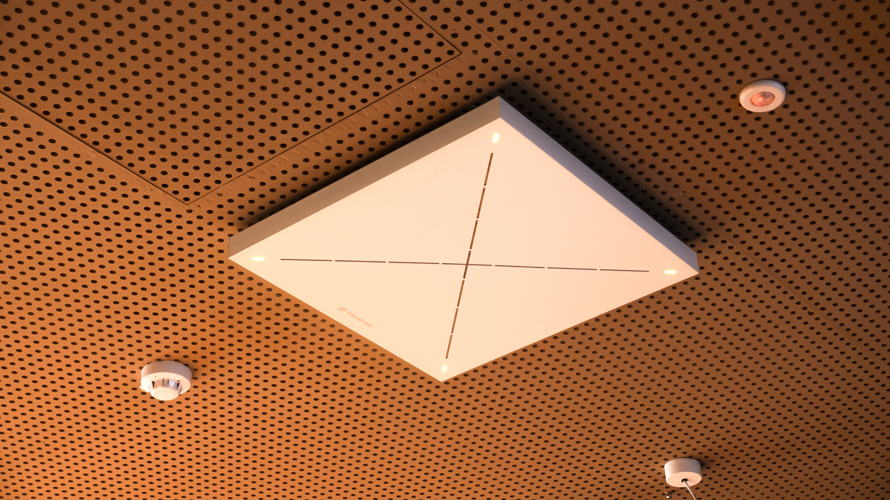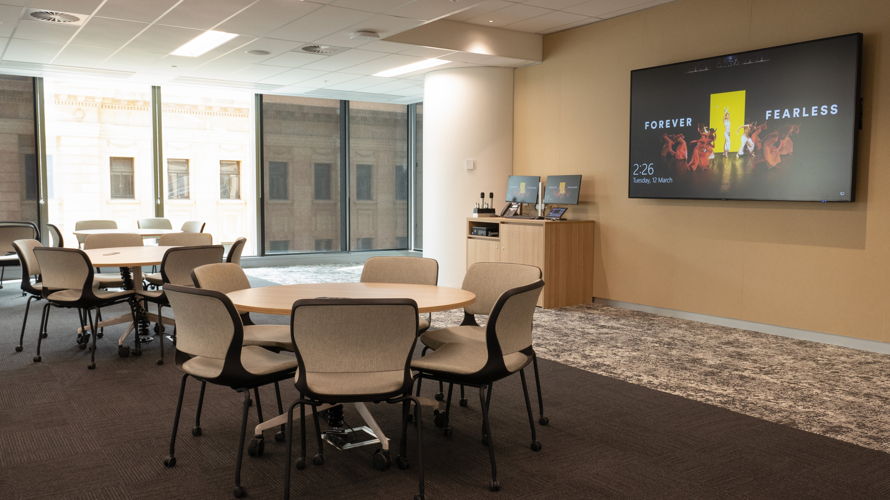Educational Innovation Led By Sennheiser Technology at Flinders University’s Adelaide Campus
May 14, 2024

Flinders University’s new eight-floor City Campus in Adelaide CBD relies heavily on Sennheiser technology to enable its flexible and collaborative learning pedagogy.
Sydney, Australia, May, 7 2024 – For university AV architects, the challenge extends beyond simply keeping up with new technologies; it requires a commitment to adapting and integrating these innovations into evolving pedagogical shifts. At the heart of this evolution is Flinders University's new eight-floor City Campus in Adelaide CBD, which exemplifies the use of Sennheiser technology, including the TeamConnect Ceiling 2 ceiling microphone and SpeechLine Digital Wireless microphone, to foster a flexible and collaborative learning environment. This proactive approach ensures that the university not only meets but consistently exceeds the ever-changing expectations of today's learners, establishing a new benchmark in educational excellence.
Before the design and fit-out, the Flinders University AV team embraced platforms that perfectly complemented modern teaching methodologies. Traditional lecture theatres have been transformed into vibrant, flat-floor, flexible spaces, promoting dynamic and interactive learning environments. Each room is thoughtfully equipped to support both physical and digital connectivity, featuring user-friendly stations for lecturers to easily connect laptops via HDMI for BYOD and USB/HDMI for the Room PC, thereby enriching conferencing capabilities and enhancing the overall educational experience.
Flinders University’s Senior IDS Technical Lead, Leigh Hoppenbrouwers: “All our rooms are designed to be collaborative and flexible, and we have one code base. Speciality rooms, such as the moot court or the boardroom, share the same code, only with aspects added or subtracted. The moot court, for example, has 12 extra channels of wireless and extra displays to simulate a courtroom experience. It means that teaching can happen in any location, and the lecturer will be confident of their ability to work within those spaces.”
The solution
In its lecture spaces, Flinders University installed a combination of TeamConnect Ceiling 2 microphones and SpeechLine Digital Wireless (SL DW) handheld and lapel microphones.

Daniel Rowe, Business Development Manager at Sennheiser emphaised the company’s long standing expertise in audio technology. “Sennheiser’s been at the forefront of transducer manufacture for approaching 80 years now, so we have a vast amount of experience capturing and reproducing the human voice, whether that be in the recording studio right through to a boardroom or lectern.”
Leigh Hoppenbrouwers, together with Oliver Taylor, Service Delivery Manager from Diversified — the firm that secured the tender for installation and system integration —explained the careful planning behind the audio setup. They detailed how the chosen technology supports Flinders University's innovative pedagogical approach, enabling seamless audio coverage throughout their spaces.
TeamConnect Ceiling 2
Hoppenbrouwers emphasized the transformative impact of Sennheiser’s technology at Flinder’s University, noting, “We’re using Sennheiser’s TeamConnect Ceiling 2 microphones as uplift for our lecture capture and for the far-end participants on our web conferencing. Previously, we had a little gooseneck microphone poking out the ceiling, or we were reliant on the lapel mic or handing around a handheld. The TCC 2 units mean our lecturers can walk the room and retain crystal clear audio on the web conference or lecture capture.”
“TCC 2 really improves the students’ experience as well. For Q&As or Teams sessions where students are talking to an external audience or an external audience is talking to them over web conferencing, the difference is night and day. We’re really empowering students to be involved when a handheld microphone can be really daunting – TCC 2 makes for a more natural interaction, and there are fewer nerves. It’s really empowering them to speak their mind and say what’s on their mind.”

Hoppenbrouwers added, “The experience for those on the far end is also great. The feedback we’re getting is tremendous. The other day we held a Teams session with a single TCC 2 in the space and no microphones and the participants on the far end thought it sounded clearer than sitting in the room. And that’s a room with glass walls and a whiteboard at the front.” This positive feedback on the clarity delivered by Sennheiser’s innovative solutions emphasizes their significant contribution to enhancing the educational experience and teaching quality at Flinders University.
The boardroom
In addition to the education spaces, a 25-person boardroom at Flinders University is equipped with state-of-the-art technology to facilitate executive meetings and high-level collaborations. The boardroom features a Crestron Automate VX auto-tracking system. At the front end is a 98-inch NEC C series display then an 86-inch NEC C series display either side of the table, with a pair of One Beyond PTZ cameras.

Olie Taylor explains the audio setup: “We have three Sennheiser TeamConnect Ceiling 2 microphones over the space. From a microphone pickup perspective, we could easily have managed with two, or perhaps even one TCC 2, but Crestron recommended three to ensure we achieved the best resolution for the positional tracking provided by the mic arrays.”
He continues, “The auto-tracking provided by the TCC 2 positional data via its API is very impressive. But we also have a manual mode which allows the moderator to select pre-configured camera settings. In this case, we’ve programmed the cameras to frame groups of three chairs/board members, along with a tight Vice Chancellor shot.”
SpeechLine Digital Wireless
The use of Sennheiser’s SpeechLine Digital Wireless (SL DW) system in Flinders University’s lecture halls marks a significant improvement in audio technology for education. Each room features four SL DW channels — two handheld and two lapel microphones — designed to enhance voice clarity, which is essential for effective communication in learning spaces.

The integration of Sennheiser's Control Cockpit software plays a crucial role in efficiently managing complex audio systems. Paul Raphael, Sales Manager at Sennheiser, elaborates on the importance of this tool: “Control Cockpit is the configuration and monitoring layer that sits alongside SL DW and TCC2. This was a fairly big rollout and for the team to be able to deploy, manage and monitor everything from a central location was key.”
Olie Taylor speaks to the utility of the Control Cockpit: “Sennheiser Cockpit gives us an overview of the status of the microphones in the space – ‘am I seeing level from the mic receiver?’. If those monitoring platforms don’t provide the answers then we’ll revert to the Biamp Tesira software. Between Crestron VC4, Dante Controller, Sennheiser Cockpit and the Tesira software most issues can be rectified without leaving the desk. Additionally, the Sennheiser Cockpit was particularly helpful during the commissioning phase as well.
“TCC 2 was amazingly simple to install. And configuration is easy. After we installed all of the TCC 2s and performed the initial setup, we jumped onto Cockpit, selected them all, and put in our global settings (the gain and EQ settings have all largely been identical), and one click later it was all done.” Taylor reflects on the installation process.
Daniel Rowe, further elaborated on the company’s design philosophy, “We try to ensure our systems are as intuitive to use and deploy as possible. While there’s a lot going on under the hood and we can really maximise on monitoring and managing vast deployments of technology in very demanding scenarios such as universities, for faculty or for students we want to make sure that interface is seamless and, in many instances, touch-less too.”
Paul Raphael, commented on the overall success of the installation and the ongoing commitment to their customers “To see it all come together is a really great feeling. It’s nice to hear the feedback that our solutions were so seamless and simple to deploy. Now that the project is complete it doesn’t mean our journey is over. At the top of the list of our Culture Principles is our customers – everything starts and ends with them. The trust of our customers is the most important thing. They can pick up the phone and give us a call any time of day if they need support, design assistance or if they need a deeper understanding about the products.”
Tailored audio solutions, such as those implemented at Flinders University, demonstrate significant enhancements in teaching and learning experiences and serve as a model for future advancements in educational technology. The practical benefits of these technologies are evident in educational settings, where devices like the TeamConnect Ceiling 2 and the SpeechLine Digital Wireless system have markedly improved the auditory experience in university lecture halls. This improvement facilitates clearer communication and fosters more interactive learning environments. As the project concludes, the ongoing relationship between Flinders University and Sennheiser continues to thrive, built on a mutual commitment to delivering high-quality audio solutions that meet the evolving needs of educational institutions.
To see more of Sennheiser’s solutions at Flinders University, see here.
About Sennheiser
We live and breathe audio. We are driven by the passion to create audio solutions that make a difference. Building the future of audio and bringing remarkable sound experiences to our customers – this is what the Sennheiser brand has stood for since more than 75 years. While professional audio solutions such as microphones, conference systems, streaming technologies and monitoring systems are part of the business of Sennheiser electronic GmbH & Co. KG, the business with consumer devices such as headphones, soundbars and speech-enhanced hearables is operated by Sonova Holding AG under the license of Sennheiser.

Daniella Kohan
Communications Manager - Americas & ANZ, Sennheiser Electronic Corporation

Jeffrey Horan
Global PR/Media Manager Business Communication, Sennheiser electronic SE & Co. KG

Sennheiser Flinders University Case Study.docx
DOCX - 17 Mb
Sennheiser Flinders University Case Study.pdf
PDF - 537 Kb







